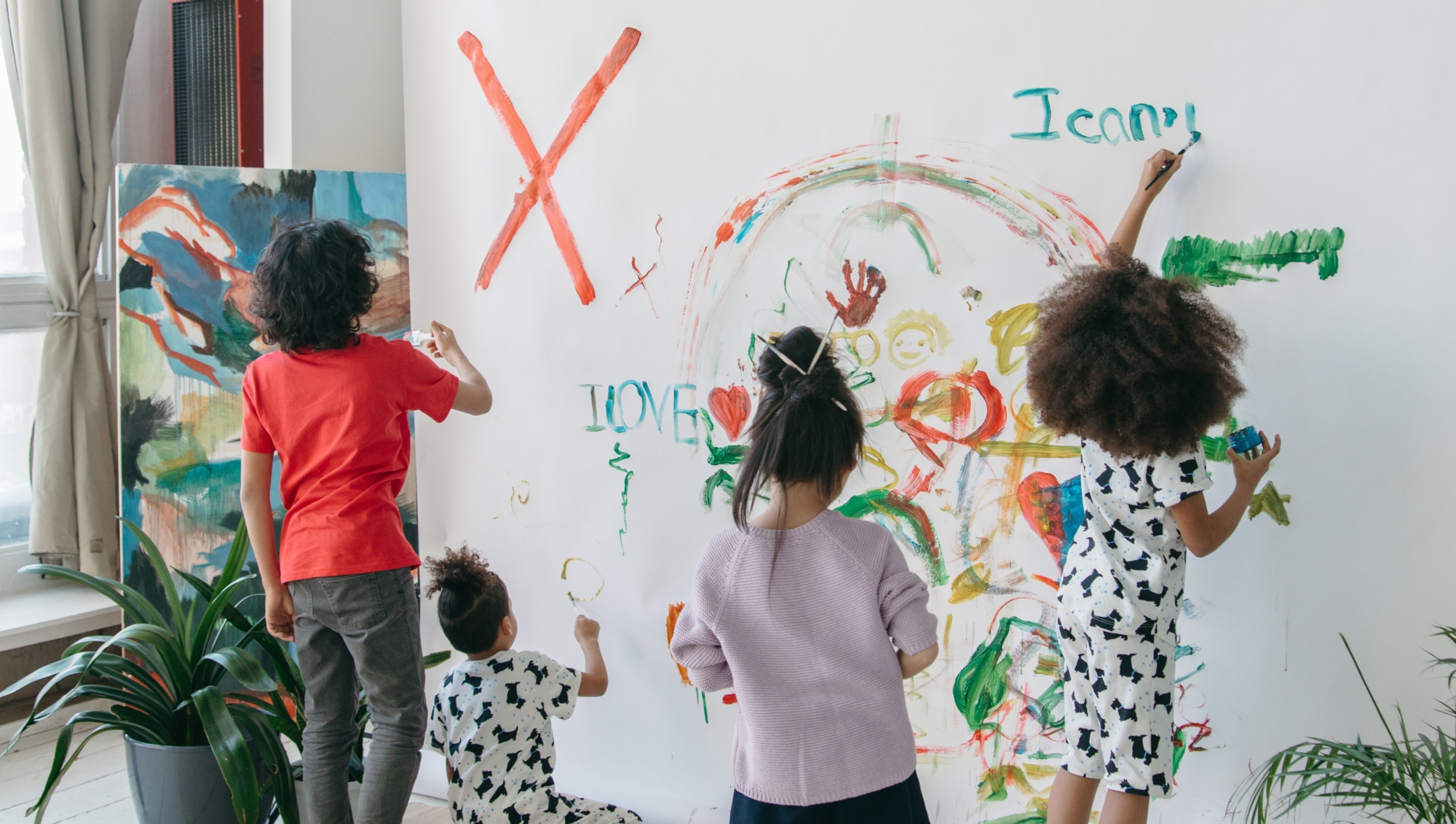AUTHORS
Malissa Shriver, Co-founder & Board Chair, Turnaround Arts CA
Barbara Palley, Director of Program and Strategy, Turnaround Arts CA

The arts create the pathways to healing and learning that students from communities greatly impacted by the pandemic and racial injustice need right now. Yet, students who could benefit from the arts the most, including students with special needs and of low socioeconomic status, get it the least. As schools reopen this summer and fall, let’s not return to the old normal that reinforces inequitable access to the arts.
The arts aren’t enrichment—they are education. Drawing from decades of research, we know that learning is at once cognitive, social, emotional, and cultural. Arts in schools create pathways to learning through relationship building, joy, exploration, and self-direction (Darling-Hammond, 2021; CCEE Summer of Joy, 2021). The Visual and Performing Arts are not only standards-based content areas of their own right, but also tools that may be used to meet key priorities across the school site.
At Turnaround Arts: California, we partner with schools in historically marginalized communities across the state to build the capacity of teachers and principals in leveraging the arts to create equity and access for all students and to support whole-school transformation. Prior to and during the pandemic, our 24 partnering elementary and middle schools have not only sustained the arts in their schools, but have creatively innovated to expand their use with wonderful results.
The Arts Motivate Student-Driven Conversation – Visual Thinking Strategies (VTS) help classroom teachers facilitate open-ended conversations among students about works of art. By fostering collaborative, inclusive, community-building dialogue that transcends distance, VTS opens pathways to support speaking, listening, and English language development in ways that are culturally responsive, socially inclusive, and visually stimulating. Teachers who integrated VTS in their instruction observed higher rates of participation in distance learning, as students turned on their cameras or added a FlipGrid video to voice their opinions about the work of art. Building off their peers’ observations and interpretations, students actively engaged in and contributed to discussions with their own personal connections, claims, and evidence. Middle school students working with visiting spoken word artists from Get Lit Words Ignite also had the opportunity to find their own voice. Students adopted a poem of their own choosing from the literary canon, and then wrote and performed original response pieces to the classics. Through art, students who have never performed or written poetry before, made personal connections between literature and present-day cultural and social issues that were important to them.
The Arts Create Multiple Entry Points to Learning – Integrating the arts into core curriculum aligns with neuroscientific research and culturally responsive approaches to provide multiple modalities for students to introduce and manipulate concepts to demonstrate understanding. For example, teachers might ask students to create facial expressions and body gestures to represent the emotions of a particular character from literature, as they learn new vocabulary to describe those emotions. Other students may use digital tools to compose simple music that represents the mood of a particular book or chapter. When classroom teachers utilize the arts across their curriculum, they report students engage and learn in ways that they wouldn’t otherwise.
The Arts Support Social Emotional Learning – Partnering with guidance counselors, art specialists, and classroom teachers to integrate the arts schoolwide can create outlets for student expression, stress and anxiety reduction, and relationship building. The arts provide important nonverbal pathways for expression, calming the “fight or flight” mode for students experiencing trauma. Some classroom teachers begin each day with art in their virtual classrooms, engaging students in collaborative drawing or dance challenges to activate their participation and to create a safe space for experimentation. UCLArts & Healing’s Beat the Odds program offers another opportunity to integrate the arts to support students’ social-emotional well-being. This evidence-based program utilizes drumming circles to build students’ core strengths, such as focusing, listening, collaborating, building trust, expressing empathy and gratitude, and managing stress/anger. Turnaround Arts: California partner schools participated in the Cope & Hope Photo Project, which utilizes photography to express how school community members are coping during the pandemic and their hopes for school in the future.
The Arts Reimagine Family Engagement – Synchronous and asynchronous arts-based family engagement activities can strengthen home/school relationships and support families during this difficult time. Schools found that despite Zoom fatigue, families tuned in for activities to build positive emotions, relieve stress, and share joy with their children through the arts. Some examples include take-home art kits, literacy-supporting early childhood music classes with San Diego Youth Symphony, family art, or Latin dance nights with P.S. ARTS.
The results of this work are tangible. One of our partner schools in Marina, CA conducted a YouthTruth survey and found that compared to other schools in their district and county, students in this school reported higher rates of engagement and interest in their school work, along with stronger connections with their teachers and classmates. Another partner school in Los Angeles County is seeing higher rates of academic performance compared to other schools in the area. Since we began this work in 2014, we have seen these positive trends across our partner schools, but to see them over the past year is a true testament to the power of the arts.
If the past year has taught us anything, it’s that creativity is an essential skill that helps us innovate, adapt, and connect. We also know that principals, teachers, students, and families in school communities across the state have a vast wealth of knowledge, cultural assets, as well as the motivation to create new ways of teaching and learning that can support the development of the whole child. By leveraging the arts, we can empower the entire school community to imagine and create better learning environments for our young people—ones that are inclusive, joyful, rigorous, and engaging.
For more information about Turnaround Arts California, please visit www.turnaroundartsca.org.
